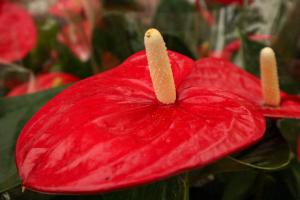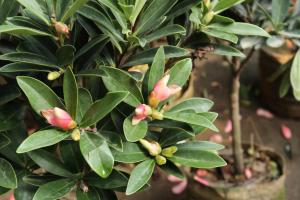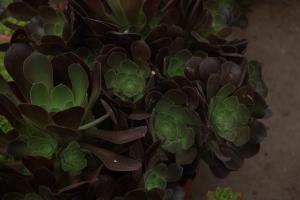The Green Color of Plant Cells
Have you ever wondered what makes plant cells green? The answer lies in a special organelle called the chloroplast, which contains a pigment known as chlorophyll.
Chlorophyll and Photosynthesis
Chlorophyll is a green pigment that is responsible for absorbing light during photosynthesis, the process by which plants convert sunlight, carbon dioxide, and water into glucose and oxygen. Chlorophyll molecules are located within the thylakoid membranes of the chloroplasts, where they capture photons from the sun and convert their energy into chemical energy that can be used by the plant.
The Structure of Chlorophyll
Chlorophyll is composed of a complex ring structure called a porphyrin, which contains a magnesium ion at its center. This allows the chlorophyll molecule to absorb light in the red and blue regions of the spectrum, while reflecting green light, giving plants their characteristic color.
Other Pigments in Plants
While chlorophyll is the primary pigment responsible for the green color of most plants, there are also other pigments that contribute to plant coloration. For example, carotenoids are orange and yellow pigments that are responsible for the color of pumpkins, carrots, and tomatoes. Anthocyanins are red, purple, and blue pigments that are responsible for the color of grapes, blueberries, and other fruits and flowers.
The Benefits of Green Pigmentation
The green pigmentation of plant cells is essential for their survival, as it allows them to photosynthesize and produce energy. Without chlorophyll, plants would not be able to capture the sun's energy and convert it into food. Additionally, the green color of leaves helps to protect them from damage caused by excess sunlight, as it reflects some of the light away from the leaf's surface.
In Conclusion
The green color of plant cells is the result of the presence of chlorophyll, a pigment that is essential for photosynthesis and the production of energy. While other pigments also contribute to the coloration of plants, chlorophyll is the primary pigment responsible for their green color. So, the next time you see a lush green garden or enjoy a tasty salad, remember the important role that chlorophyll plays in the life of plants.

 how many times do yo...
how many times do yo... how many planted tre...
how many planted tre... how many pine trees ...
how many pine trees ... how many pecan trees...
how many pecan trees... how many plants comp...
how many plants comp... how many plants can ...
how many plants can ... how many plants and ...
how many plants and ... how many pepper plan...
how many pepper plan...































